-
EXECUTIVE SUMMARY
-
MARKET INTRODUCTION
-
Definition
-
Scope of the Study
- Research Objective
- Assumptions
- Limitations
-
RESEARCH METHODOLOGY
-
Overview
-
Data Mining
-
Secondary Research
-
Primary Research
- Primary Interviews and Information Gathering Process
- Breakdown of Primary Respondents
-
Forecasting Model
-
Market Size Estimation
- Bottom-Up Approach
- Top-Down Approach
-
Data Triangulation
-
Validation
-
MARKET DYNAMICS
-
Overview
-
Drivers
-
Restraints
-
Opportunities
-
MARKET FACTOR ANALYSIS
-
Value Chain Analysis
-
Porter’s Five Forces Analysis
- Bargaining Power of Suppliers
- Bargaining Power of Buyers
- Threat of New Entrants
- Threat of Substitutes
- Intensity of Rivalry
-
COVID-19 Impact Analysis
- Market Impact Analysis
- Regional Impact
- Opportunity and Threat Analysis
-
GLOBAL HOSPITAL SERVICES MARKET, BY HOSPITAL TYPE
-
Overview
-
State-owned Hospital
-
Private Hospital
-
Public/ Community Hospital
-
GLOBAL HOSPITAL SERVICES MARKET, BY SERVICE TYPE
-
Overview
-
Outpatient Services
-
Inpatient Service
-
GLOBAL HOSPITAL SERVICES MARKET, BY SERVICE AREAS
-
Overview
-
Cardiovascular
-
Acute Care
-
Cancer Care
-
Diagnostics and Imaging
-
Neurorehabilitation & Psychiatry Services
-
Gynecology
-
Others
-
GLOBAL HOSPITAL SERVICES MARKET, BY REGION
-
Overview
-
North America
- US
- Canada
-
Europe
- Germany
- France
- UK
- Italy
- Spain
- Rest of Europe
-
Asia-Pacific
- China
- India
- Japan
- South Korea
- Australia
- Rest of Asia-Pacific
-
Rest of the World
- Middle East
- Africa
- Latin America
-
COMPETITIVE LANDSCAPE
-
Overview
-
Competitive Analysis
-
Market Share Analysis
-
Major Growth Strategy in the Global Hospital Services Market,
-
Competitive Benchmarking
-
Leading Players in Terms of Number of Developments in the Global Hospital Services Market,
-
Key developments and Growth Strategies
- New Product Launch/Service Deployment
- Merger & Acquisitions
- Joint Ventures
-
Major Players Financial Matrix
- Sales & Operating Income, 2022
- Major Players R&D Expenditure. 2022
-
COMPANY PROFILES
-
Mayo Clinic
- Company Overview
- Financial Overview
- Products Offered
- Key Developments
- SWOT Analysis
- Key Strategies
-
HCA Healthcare
- Company Overview
- Financial Overview
- Products Offered
- Key Developments
- SWOT Analysis
- Key Strategies
-
Cleveland Clinic
- Company Overview
- Financial Overview
- Products Offered
- Key Developments
- SWOT Analysis
- Key Strategies
-
Spire Healthcare Group plc
- Company Overview
- Financial Overview
- Products Offered
- Key Developments
- SWOT Analysis
- Key Strategies
-
Ramsay Health Care
- Company Overview
- Financial Overview
- Products Offered
- Key Developments
- SWOT Analysis
- Key Strategies
-
Ascension Health
- Company Overview
- Financial Overview
- Products Offered
- Key Developments
- SWOT Analysis
- Key Strategies
-
Community Health Systems Inc
- Company Overview
- Financial Overview
- Products Offered
- Key Developments
- SWOT Analysis
- Key Strategies
-
Tenet Healthcare
- Company Overview
- Financial Overview
- Products Offered
- Key Developments
- SWOT Analysis
- Key Strategies
-
Fortis Healthcare
- Company Overview
- Financial Overview
- Products Offered
- Key Developments
- SWOT Analysis
- Key Strategies
-
APPENDIX
-
References
-
Related Reports
-
-
LIST OF TABLES
-
GLOBAL HOSPITAL SERVICES MARKET, SYNOPSIS, 2018-2032
-
GLOBAL HOSPITAL SERVICES MARKET, ESTIMATES & FORECAST, 2018-2032 (USD BILLION)
-
GLOBAL HOSPITAL SERVICES MARKET, BY HOSPITAL TYPE, 2018-2032 (USD BILLION)
-
GLOBAL HOSPITAL SERVICES MARKET, BY SERVICE TYPE, 2018-2032 (USD BILLION)
-
GLOBAL HOSPITAL SERVICES MARKET, BY SERVICE AREAS, 2018-2032 (USD BILLION)
-
NORTH AMERICA: HOSPITAL SERVICES MARKET, BY HOSPITAL TYPE, 2018-2032 (USD BILLION)
-
NORTH AMERICA: HOSPITAL SERVICES MARKET, BY SERVICE TYPE, 2018-2032 (USD BILLION)
-
NORTH AMERICA: HOSPITAL SERVICES MARKET, BY SERVICE AREAS, 2018-2032 (USD BILLION)
-
US: HOSPITAL SERVICES MARKET, BY HOSPITAL TYPE, 2018-2032 (USD BILLION)
-
US: HOSPITAL SERVICES MARKET, BY SERVICE TYPE, 2018-2032 (USD BILLION)
-
US: HOSPITAL SERVICES MARKET, BY SERVICE AREAS, 2018-2032 (USD BILLION)
-
CANADA: HOSPITAL SERVICES MARKET, BY HOSPITAL TYPE, 2018-2032 (USD BILLION)
-
CANADA: HOSPITAL SERVICES MARKET, BY SERVICE TYPE, 2018-2032 (USD BILLION)
-
CANADA: HOSPITAL SERVICES MARKET, BY SERVICE AREAS, 2018-2032 (USD BILLION)
-
EUROPE: HOSPITAL SERVICES MARKET, BY HOSPITAL TYPE, 2018-2032 (USD BILLION)
-
EUROPE: HOSPITAL SERVICES MARKET, BY SERVICE TYPE, 2018-2032 (USD BILLION)
-
EUROPE: HOSPITAL SERVICES MARKET, BY SERVICE AREAS, 2018-2032 (USD BILLION)
-
EUROPE: HOSPITAL SERVICES MARKET, BY END USER, 2018-2032 (USD BILLION)
-
GERMANY: HOSPITAL SERVICES MARKET, BY HOSPITAL TYPE, 2018-2032 (USD BILLION)
-
GERMANY: HOSPITAL SERVICES MARKET, BY SERVICE TYPE, 2018-2032 (USD BILLION)
-
GERMANY: HOSPITAL SERVICES MARKET, BY SERVICE AREAS, 2018-2032 (USD BILLION)
-
GERMANY: HOSPITAL SERVICES MARKET, BY END USER, 2018-2032 (USD BILLION)
-
FRANCE: HOSPITAL SERVICES MARKET, BY HOSPITAL TYPE, 2018-2032 (USD BILLION)
-
FRANCE: HOSPITAL SERVICES MARKET, BY SERVICE TYPE, 2018-2032 (USD BILLION)
-
FRANCE: HOSPITAL SERVICES MARKET, BY SERVICE AREAS, 2018-2032 (USD BILLION)
-
ITALY: HOSPITAL SERVICES MARKET, BY HOSPITAL TYPE, 2018-2032 (USD BILLION)
-
ITALY: HOSPITAL SERVICES MARKET, BY SERVICE TYPE, 2018-2032 (USD BILLION)
-
ITALY: HOSPITAL SERVICES MARKET, BY SERVICE AREAS, 2018-2032 (USD BILLION)
-
ITALY: HOSPITAL SERVICES MARKET, BY END USER, 2018-2032 (USD BILLION)
-
SPAIN: HOSPITAL SERVICES MARKET, BY HOSPITAL TYPE, 2018-2032 (USD BILLION)
-
SPAIN: HOSPITAL SERVICES MARKET, BY SERVICE TYPE, 2018-2032 (USD BILLION)
-
SPAIN: HOSPITAL SERVICES MARKET, BY SERVICE AREAS, 2018-2032 (USD BILLION)
-
SPAIN: HOSPITAL SERVICES MARKET, BY END USER, 2018-2032 (USD BILLION)
-
UK: HOSPITAL SERVICES MARKET, BY HOSPITAL TYPE, 2018-2032 (USD BILLION)
-
UK: HOSPITAL SERVICES MARKET, BY SERVICE TYPE, 2018-2032 (USD BILLION)
-
UK: HOSPITAL SERVICES MARKET, BY SERVICE AREAS, 2018-2032 (USD BILLION)
-
UK: HOSPITAL SERVICES MARKET, BY END USER, 2018-2032 (USD BILLION)
-
REST OF EUROPE: HOSPITAL SERVICES MARKET, BY HOSPITAL TYPE, 2018-2032 (USD BILLION)
-
REST OF EUROPE: HOSPITAL SERVICES MARKET, BY SERVICE TYPE, 2018-2032 (USD BILLION)
-
REST OF EUROPE: HOSPITAL SERVICES MARKET, BY SERVICE AREAS, 2018-2032 (USD BILLION)
-
REST OF EUROPE: HOSPITAL SERVICES MARKET, BY END USER, 2018-2032 (USD BILLION)
-
ASIA-PACIFIC: HOSPITAL SERVICES MARKET, BY HOSPITAL TYPE, 2018-2032 (USD BILLION)
-
ASIA-PACIFIC: HOSPITAL SERVICES MARKET, BY SERVICE TYPE, 2018-2032 (USD BILLION)
-
ASIA-PACIFIC: HOSPITAL SERVICES MARKET, BY SERVICE AREAS, 2018-2032 (USD BILLION)
-
JAPAN: HOSPITAL SERVICES MARKET, BY HOSPITAL TYPE, 2018-2032 (USD BILLION)
-
JAPAN: HOSPITAL SERVICES MARKET, BY SERVICE TYPE, 2018-2032 (USD BILLION)
-
JAPAN: HOSPITAL SERVICES MARKET, BY SERVICE AREAS, 2018-2032 (USD BILLION)
-
CHINA: HOSPITAL SERVICES MARKET, BY HOSPITAL TYPE, 2018-2032 (USD BILLION)
-
CHINA: HOSPITAL SERVICES MARKET, BY SERVICE TYPE, 2018-2032 (USD BILLION)
-
CHINA: HOSPITAL SERVICES MARKET, BY SERVICE AREAS, 2018-2032 (USD BILLION)
-
INDIA: HOSPITAL SERVICES MARKET, BY HOSPITAL TYPE, 2018-2032 (USD BILLION)
-
INDIA: HOSPITAL SERVICES MARKET, BY SERVICE TYPE, 2018-2032 (USD BILLION)
-
INDIA: HOSPITAL SERVICES MARKET, BY SERVICE AREAS, 2018-2032 (USD BILLION)
-
SOUTH KOREA: HOSPITAL SERVICES MARKET, BY HOSPITAL TYPE, 2018-2032 (USD BILLION)
-
SOUTH KOREA: HOSPITAL SERVICES MARKET, BY SERVICE TYPE, 2018-2032 (USD BILLION)
-
SOUTH KOREA: HOSPITAL SERVICES MARKET, BY SERVICE AREAS, 2018-2032 (USD BILLION)
-
REST OF ASIA-PACIFIC: HOSPITAL SERVICES MARKET, BY HOSPITAL TYPE, 2018-2032 (USD BILLION)
-
REST OF ASIA-PACIFIC: HOSPITAL SERVICES MARKET, BY SERVICE TYPE, 2018-2032 (USD BILLION)
-
REST OF ASIA-PACIFIC: HOSPITAL SERVICES MARKET, BY SERVICE AREAS, 2018-2032 (USD BILLION)
-
REST OF THE WORLD: HOSPITAL SERVICES MARKET, BY HOSPITAL TYPE, 2018-2032 (USD BILLION)
-
REST OF THE WORLD: HOSPITAL SERVICES MARKET, BY SERVICE TYPE, 2018-2032 (USD BILLION)
-
REST OF THE WORLD: HOSPITAL SERVICES MARKET, BY SERVICE AREAS, 2018-2032 (USD BILLION)
-
MIDDLE EAST: HOSPITAL SERVICES MARKET, BY HOSPITAL TYPE, 2018-2032 (USD BILLION)
-
MIDDLE EAST: HOSPITAL SERVICES MARKET, BY SERVICE TYPE, 2018-2032 (USD BILLION)
-
MIDDLE EAST: HOSPITAL SERVICES MARKET, BY SERVICE AREAS, 2018-2032 (USD BILLION)
-
AFRICA: HOSPITAL SERVICES MARKET, BY HOSPITAL TYPE, 2018-2032 (USD BILLION)
-
AFRICA: HOSPITAL SERVICES MARKET, BY SERVICE TYPE, 2018-2032 (USD BILLION)
-
AFRICA: HOSPITAL SERVICES MARKET, BY SERVICE AREAS, 2018-2032 (USD BILLION)
-
LATIN AMERICA: HOSPITAL SERVICES MARKET, BY HOSPITAL TYPE, 2018-2032 (USD BILLION)
-
LATIN AMERICA: HOSPITAL SERVICES MARKET, BY SERVICE TYPE, 2018-2032 (USD BILLION)
-
LATIN AMERICA: HOSPITAL SERVICES MARKET, BY SERVICE AREAS, 2018-2032 (USD BILLION)
-
LIST OF FIGURES
-
RESEARCH PROCESS
-
MARKET STRUCTURE FOR THE GLOBAL HOSPITAL SERVICES MARKET
-
MARKET DYNAMICS FOR THE GLOBAL HOSPITAL SERVICES MARKET
-
GLOBAL HOSPITAL SERVICES MARKET, SHARE (%), BY HOSPITAL TYPE, 2022
-
GLOBAL HOSPITAL SERVICES MARKET, SHARE (%), BY SERVICE TYPE, 2022
-
GLOBAL HOSPITAL SERVICES MARKET, SHARE (%), BY SERVICE AREAS, 2022
-
GLOBAL HOSPITAL SERVICES MARKET, SHARE (%), BY REGION, 2022
-
NORTH AMERICA: HOSPITAL SERVICES MARKET, SHARE (%), BY REGION, 2022
-
EUROPE: HOSPITAL SERVICES MARKET, SHARE (%), BY REGION, 2022
-
ASIA-PACIFIC: HOSPITAL SERVICES MARKET, SHARE (%), BY REGION, 2022
-
REST OF THE WORLD: HOSPITAL SERVICES MARKET, SHARE (%), BY REGION, 2022
-
GLOBAL HOSPITAL SERVICES MARKET: COMPANY SHARE ANALYSIS, 2022 (%)
-
MAYO CLINIC: FINANCIAL OVERVIEW SNAPSHOT
-
MAYO CLINIC: SWOT ANALYSIS
-
HCA HEALTHCARE: FINANCIAL OVERVIEW SNAPSHOT
-
HCA HEALTHCARE: SWOT ANALYSIS
-
SPIRE HEALTHCARE GROUP PLC: FINANCIAL OVERVIEW SNAPSHOT
-
SPIRE HEALTHCARE GROUP PLC: SWOT ANALYSIS
-
RAMSAY HEALTH CARE: FINANCIAL OVERVIEW SNAPSHOT
-
RAMSAY HEALTH CARE: SWOT ANALYSIS
-
ASCENSION HEALTH: FINANCIAL OVERVIEW SNAPSHOT
-
ASCENSION HEALTH: SWOT ANALYSIS
-
COMMUNITY HEALTH SYSTEMS, INC: FINANCIAL OVERVIEW SNAPSHOT
-
COMMUNITY HEALTH SYSTEMS, INC: SWOT ANALYSIS
-
TENET HEALTHCARE: FINANCIAL OVERVIEW SNAPSHOT
-
TENET HEALTHCARE: SWOT ANALYSIS
-
FORTIS HEALTHCARE: FINANCIAL OVERVIEW SNAPSHOT
-
FORTIS HEALTHCARE: SWOT ANALYSIS
-
CLEVELAND CLINIC: FINANCIAL OVERVIEW SNAPSHOT
-
CLEVELAND CLINIC: SWOT ANALYSIS


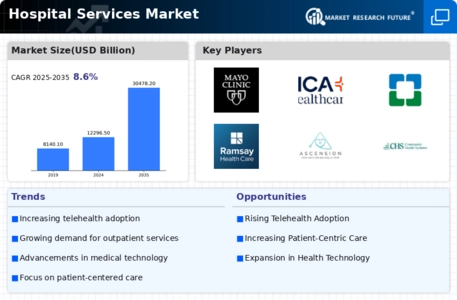

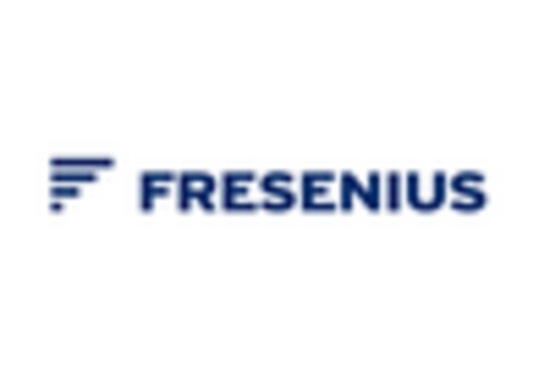
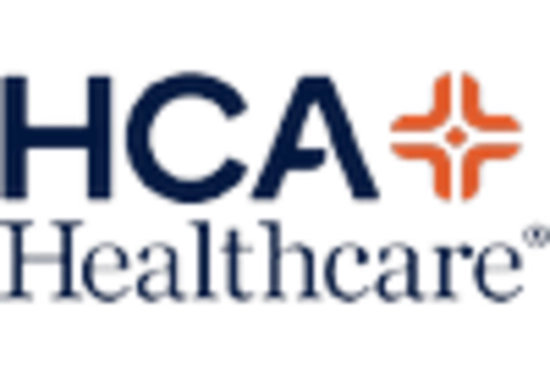
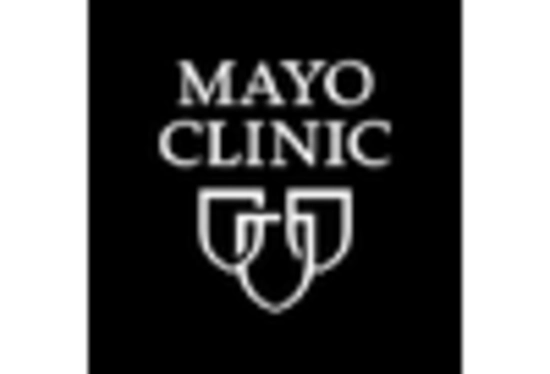
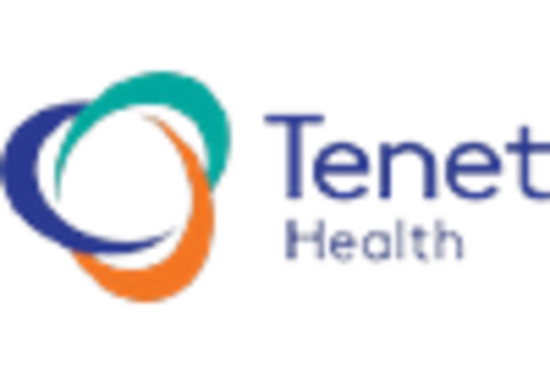


Leave a Comment